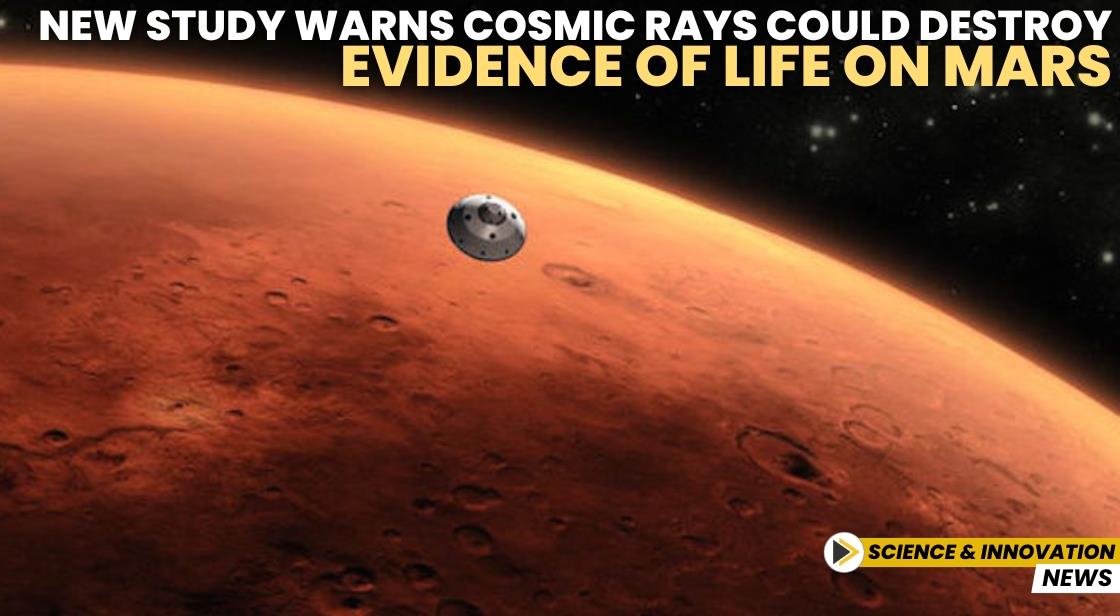New Study Warns Cosmic Rays Could Destroy Evidence of Life on Mars

News Synopsis
A groundbreaking study published in Astrobiology on November 13 has unveiled the significant challenges posed by cosmic radiation in preserving traces of life on Mars.
By simulating the impact of cosmic rays on lipids—key molecular components of cell membranes—the research highlights how rapidly these molecules degrade under radiation, particularly in salt-rich environments.
These findings cast doubt on the ability of Mars’ surface to protect ancient biosignatures, especially in regions once considered prime candidates for hosting life.
Anais Roussel, an astrobiologist at Georgetown University, emphasized the complexity of studying Mars’ salt-rich environments. Speaking to Space.com, Roussel remarked, "They go for salt-rich environments, but they could be one of the most damaging under radiation." With Mars lacking an atmospheric shield, its surface is constantly bombarded by cosmic rays, raising concerns about whether molecular evidence of ancient life can survive long-term exposure.
Cosmic Radiation and Its Impact on Mars
The Role of Lipids in Tracing Life
Lipids are essential molecular structures found in the membranes of living cells. They serve as potential biosignatures—chemical markers indicating past or present life. However, the study found that these molecules rapidly degrade when exposed to simulated cosmic rays.
Salt-Rich Environments: A Double-Edged Sword
Research revealed that the inclusion of salts in the samples exacerbated the degradation of lipids. Radiation-induced compounds appear to interact chemically with organic molecules, accelerating the breakdown. Within three million years, up to half of the lipids had fragmented, raising concerns about preserving biosignatures in Martian regions like Gale Crater, which has been exposed to radiation for roughly 80 million years.
Challenges of Surface Exploration on Mars
Limitations of Current Technology
Existing NASA rovers, such as Curiosity and Perseverance, are equipped to drill only to shallow depths. This limitation leaves much of their research subject to the effects of surface-level cosmic radiation.
The Rosalind Franklin Rover: A Deeper Probe
The European Space Agency’s Rosalind Franklin Rover, set to launch in 2029, is expected to address these limitations. With the ability to drill up to two meters beneath the surface, it could access regions protected from radiation, offering a better chance of discovering preserved biosignatures.
Future Exploration Strategies
Exploring Martian Caves and Lava Tubes
In addition to deeper drilling, researchers like Roussel advocate for missions targeting Martian caves or lava tubes. These subterranean environments may provide natural shielding from cosmic rays. As Roussel noted, "It would be extremely challenging from an engineering point of view, but this increases hope."
Reassessing Biosignature Preservation
This study highlights the need for updated exploration strategies that account for the destructive impact of radiation. By prioritizing protected environments and deeper excavation, future missions may overcome the obstacles posed by Mars’ harsh surface conditions.
Conclusion
The recent findings underscore the formidable challenges posed by cosmic radiation and salt-rich environments in preserving biosignatures on Mars. As lipids—the crucial molecular markers of life—are shown to degrade rapidly under these harsh conditions, the study calls for a reevaluation of current exploration strategies.
While existing technology limits our ability to probe beneath the radiation-exposed surface, upcoming missions like the Rosalind Franklin Rover provide a glimmer of hope by targeting deeper and potentially more protected regions. Additionally, exploring caves and lava tubes on Mars could unlock pristine environments shielded from radiation.
These insights not only highlight the complexity of searching for life on Mars but also emphasize the need for innovative engineering solutions to advance humanity’s quest for understanding the Red Planet's ancient past.
You May Like









